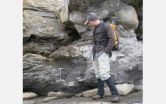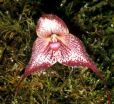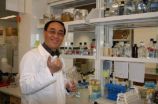(Press-News.org) Urgently-needed new treatment for a parasitic disease is being investigated in research led at the University of Strathclyde in Glasgow, Scotland.
Human African Trypanosomiasis, also known as sleeping sickness, affects between 50,000 and 70,000 people in Africa and South America. It is transmitted through the bite of the tsetse fly and attacks the nervous system and brain, leading to fever, headaches and disturbed sleep patterns.
Without treatment, the disease is fatal but a new drug to tackle it is being developed in a project led at Strathclyde, with partners from the Universities of Dundee and Glasgow. It has received funding of £648,000 from the Medical Research Council.
Development of the drug is currently at the early pre-clinical stage.
The research is among the technologies which will be on display at Expo '10, an event showcasing innovative Strathclyde research to business representatives, policy-makers and third sector organisations.
Professor Colin Suckling, of Strathclyde's Department of Pure and Applied Chemistry, is leading the research. He said: "Sleeping sickness is a threat to the health of millions of people but is extremely difficult to treat. Giving the treatments currently available for it is problematic and these treatments have their own toxicity.
"At the second stage of the disease, when it gets into the brain, the patients have to be treated in hospital and this is often difficult to bring about. We need to develop a treatment which can deal with both forms of sleeping sickness at an early stage- safely, effectively, and, ideally, administered orally."
INFORMATION:
Expo '10 takes place at Glasgow Science Centre on Tuesday, 2 November.
Scientists seek urgent treatment for fatal sleeping sickness
Investigation of new drugs to treat parasitic disease
2010-10-30
ELSE PRESS RELEASES FROM THIS DATE:
Raising giant insects to unravel ancient oxygen
2010-10-30
Boulder, CO, USA - The giant dragonflies of ancient Earth with wingspans of up to 70 centimeters (28 inches) are generally attributed to higher oxygen atmospheric levels in the atmosphere in the past. New experiments in raising modern insects in various oxygen-enriched atmospheres have confirmed that dragonflies grow bigger with more oxygen, or hyperoxia.
However, not all insects were larger when oxygen was higher in the past. For instance, the largest cockroaches ever are skittering around today. The question becomes how and why do different groups respond to changes ...
Troubled islands: Hurricanes, oil spill and sea level rise
2010-10-30
Boulder, CO, USA - The islands flanking the outlet of the Mississippi River are not only facing losses due to sea level rise and local subsidence, according to one study, but new unknown impacts from oil recovery operations, say researchers working on another project. Both will be presenting their work on Nov. 1 and 2 at the meeting of the Geological Society of American in Denver. Some islands could disappear entirely in coming decades, exposing huge swaths of marshland to the waves of the open sea.
On one side of the Mississippi River outlet, to the east of the river ...
Newly discovered gene enables fish to 'disappear'
2010-10-30
Researchers led by Vanderbilt's Roger Cone, Ph.D., have discovered a new member of a gene family that has powerful influences on pigmentation and the regulation of body weight.
The gene is the third member of the agouti family. Two agouti genes have been identified previously in humans. One helps determine skin and hair color, and the other may play an important role in obesity and diabetes.
The new gene, called agrp2, has been found exclusively in bony fish, including zebrafish, trout and salmon. The protein it encodes enables fish to change color dramatically to match ...
Animal evolution springs from 'Snowball Earth'
2010-10-30
Biogeochemists have found new evidence linking "Snowball Earth" glacial events to the rise of early animals. The research was funded by the National Science Foundation (NSF).
Study results appear in this week's issue of the journal Nature.
The controversial Snowball Earth hypothesis posits that, on several occasions, the Earth was covered from pole to pole by a thick sheet of ice lasting for millions of years.
These glaciations, the most severe in Earth history, occurred from 750 to 580 million years ago.
In the aftermath, the researchers discovered, the oceans ...
Advance could change modern electronics
2010-10-30
CORVALLIS, Ore. – Researchers at Oregon State University have solved a quest in fundamental material science that has eluded scientists since the 1960s, and could form the basis of a new approach to electronics.
The discovery, just reported online in the professional journal Advanced Materials, outlines the creation for the first time of a high-performance "metal-insulator-metal" diode.
"Researchers have been trying to do this for decades, until now without success," said Douglas Keszler, a distinguished professor of chemistry at OSU and one of the nation's leading ...
Dracula orchids and goblin spiders
2010-10-30
Dracula orchids tempt flies by masquerading as mushrooms. Goblin spiders lurk unseen in the world's leaf litter. The natural world is often just as haunting as the macabre costumes worn on city streets, as highlighted by two studies published this year by curators in the Division of Invertebrate Zoology at the American Museum of Natural History, David Grimaldi and Norman Platnick.
DRACULA ORCHIDS
According to Grimaldi and colleagues, fruit flies (Drosophilidae) of the genus Zygothrica typically swarm on mushrooms and other rain forest fungi. But one group of orchids ...
Spice in curry could prevent liver damage
2010-10-30
ST. LOUIS -- Curcumin, a chemical that gives curry its zing, holds promise in preventing or treating liver damage from an advanced form of a condition known as fatty liver disease, new Saint Louis University research suggests.
Curcurmin is contained in turmeric, a plant used by the Chinese to make traditional medicines for thousands of years. SLU's recent study highlights its potential in countering an increasingly common kind of fatty liver disease called non-alcoholic steatohepatitis (NASH). Linked to obesity and weight gain, NASH affects 3 to 4 percent of U.S. adults ...
Scripps Research team 'watches' formation of cells' protein factories for first time
2010-10-30
LA JOLLA, CA – October 29, 2010 – For Immediate Release – A team from The Scripps Research Institute has revealed the first-ever pictures of the formation of cells' "protein factories." In addition to being a major technical feat on its own, the work could open new pathways for development of antibiotics and treatments for diseases tied to errors in ribosome formation. In addition, the techniques developed in the study can now be applied to other complex challenges in the understanding of cellular processes.
Identifying and observing the molecules that form ribosomes—the ...
Shuttle mice to boost disease research
2010-10-30
GALVESTON, Texas — When the space shuttle Discovery lifts off on its final flight Nov. 2, its six astronauts will be joined by 16 rodent passengers on a historic mission of their own.
Riding in special self-contained modules that automatically supply them with food and water, the mice will be part of a long-term NASA effort aimed at understanding why spaceflight makes humans more vulnerable to infection by viruses and bacteria.
The agency has studied the phenomenon aboard its space shuttles for more than 25 years, collecting data from laboratory animals and astronauts ...
Passages Malibu Is Going Green
2010-10-30
Brian Passages Malibu's resident expert on all things Malibu announced the rehabilitation center's intention to support the conservation of Malibu's coastal wetlands. Passages Malibu Addiction Cure Center is the world's most innovative and effective residential drug and alcohol treatment program. Passages Malibu believes in supporting the community that they call home and is deeply committed to environmental concerns.
Passages Malibu, established in 2001, focuses on a more holistic approach to addiction recovery.
Because our approach to curing addiction is more organic, ...
LAST 30 PRESS RELEASES:
The Ceramic Society of Japan’s Oxoate Ceramics Research Association launches new international book project
Heart-brain connection: international study reveals the role of the vagus nerve in keeping the heart young
Researchers identify Rb1 as a predictive biomarker for a new therapeutic strategy in some breast cancers
Survey reveals ethical gaps slowing AI adoption in pediatric surgery
Stimulant ADHD medications work differently than thought
AI overestimates how smart people are, according to HSE economists
HSE researchers create genome-wide map of quadruplexes
Scientists boost cell "powerhouses" to burn more calories
Automatic label checking: The missing step in making reliable medical AI
Low daily alcohol intake linked to 50% heightened mouth cancer risk in India
American Meteorological Society announces Rick Spinrad as 2026 President-Elect
Biomass-based carbon capture spotlighted in newly released global climate webinar recording
Illuminating invisible nano pollutants: advanced bioimaging tracks the full journey of emerging nanoscale contaminants in living systems
How does age affect recovery from spinal cord injury?
Novel AI tool offers prognosis for patients with head and neck cancer
Fathers’ microplastic exposure tied to their children’s metabolic problems
Research validates laboratory model for studying high-grade serous ovarian cancer
SIR 2026 delivers transformative breakthroughs in minimally invasive medicine to improve patient care
Stem Cell Reports most downloaded papers of 2025 highlight the breadth and impact of stem cell research
Oxford-led study estimates NHS spends around 3% of its primary and secondary care budget on the health impacts of heat and cold in England
A researcher’s long quest leads to a smart composite breakthrough
Urban wild bees act as “microbial sensors” of city health.
New study finds where you live affects recovery after a hip fracture
Forecasting the impact of fully automated vehicle adoption on US road traffic injuries
Alcohol-related hospitalizations from 2016 to 2022
Semaglutide and hospitalizations in patients with obesity and established cardiovascular disease
Researchers ‘listen in’ to embryo-mother interactions during implantation using a culture system replicating the womb lining
How changing your diet could help save the world
How to make AI truly scalable and reliable for real-time traffic assignment?
Beyond fragmented markets: A new framework for efficient and stable ride-pooling
[Press-News.org] Scientists seek urgent treatment for fatal sleeping sicknessInvestigation of new drugs to treat parasitic disease




